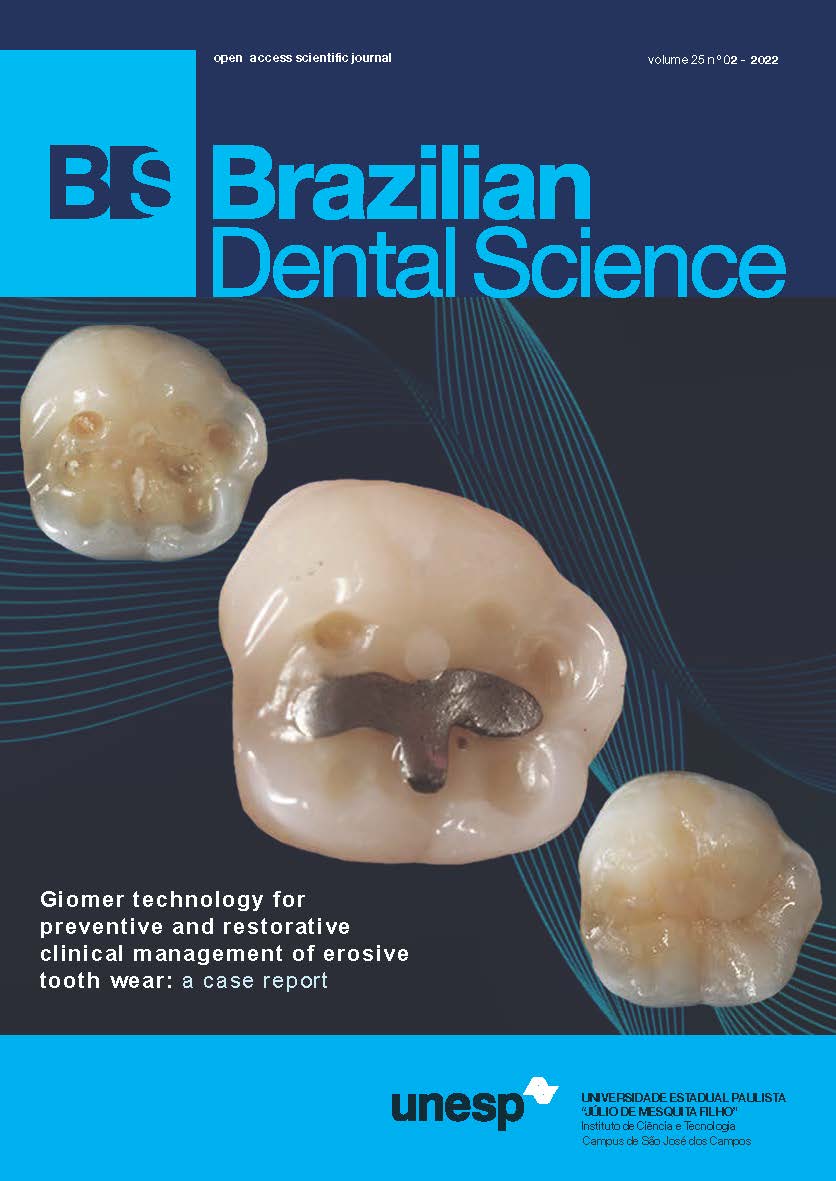Evaluation of the clinical effects of impacted lower third molar tooth on adjacent oral tissues
DOI:
https://doi.org/10.4322/bds.2022.e3024Abstract
Objective: Impacted tooth develops when the tooth fails to erupt into its anatomical functional position. The
aim of this prospective study was to find out common clinical effects of impacted lower molar on adjacent tissues
and to evaluate the relationship between signs and symptoms of impacted tooth as regards gender and age
respectively. Material and Methods: Data for this study were obtained using a well-structured questionnaire
at the Teem Dental Hospital Warri, Nigeria. The data included age, sex, and clinical features of patients with
confirmed diagnosis of impacted lower third molar following clinical examination and radiographic investigation.
Data were analysed and chi-square was employed. Results: A total of 131 patients were examined, 57 (44.5%)
were males and 74 (56.5%) were females within the ages of 10-40 years. Patients within the ages of 21-25 years
had the highest frequency (32.1%) of impacted lower third molar. It was observed that impacted tooth had a
gender predilection towards females than males. Inflamed gingivae around lower 3rd molar 60(45.8%) and pain
on the lower third molar 72(55.0%) were most predominantly associated with impacted third molar teeth. No
significant association was observed between age (0.909) and gender (0.461) against symptoms of impacted
tooth but significant association (0.001) between age and sign was observed. Conclusion: The most commonly
associated effect of impacted third molar is inflammation of the adjacent gingivae alongside pain around the
lower third molar. Prevalence of impacted molar tooth was gender based with age being a predilection factor
in its signs of presentation.
KEYWORDS
Clinical effects; Impacted tooth; Third molar; Teem Dental Hospital.
Downloads
Downloads
Published
How to Cite
Issue
Section
License
Brazilian Dental Science uses the Creative Commons (CC-BY 4.0) license, thus preserving the integrity of articles in an open access environment. The journal allows the author to retain publishing rights without restrictions.
=================




























